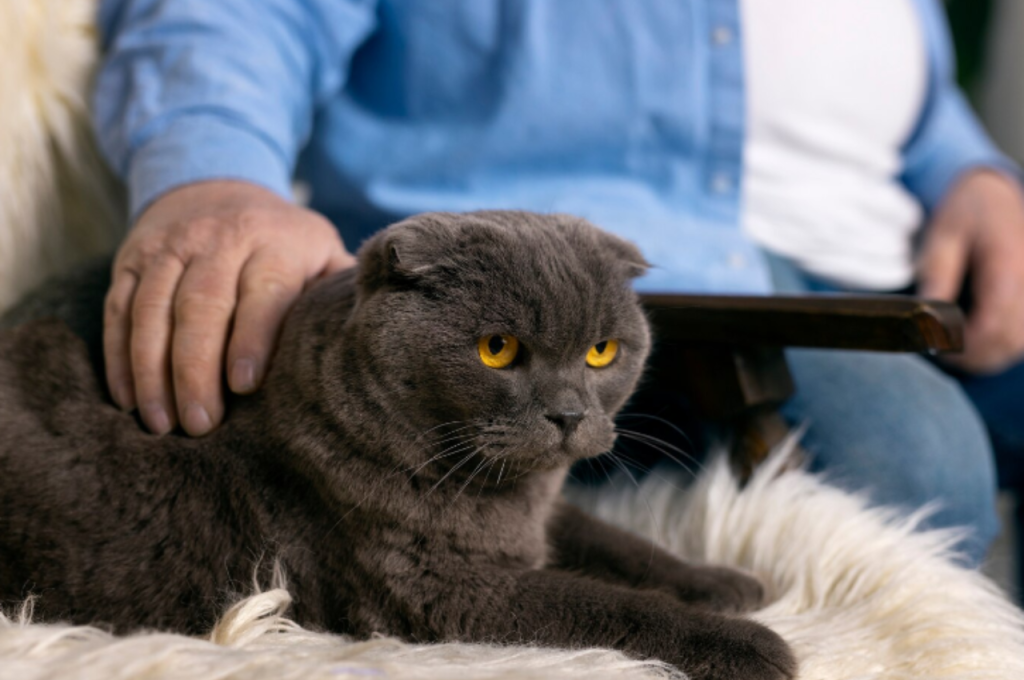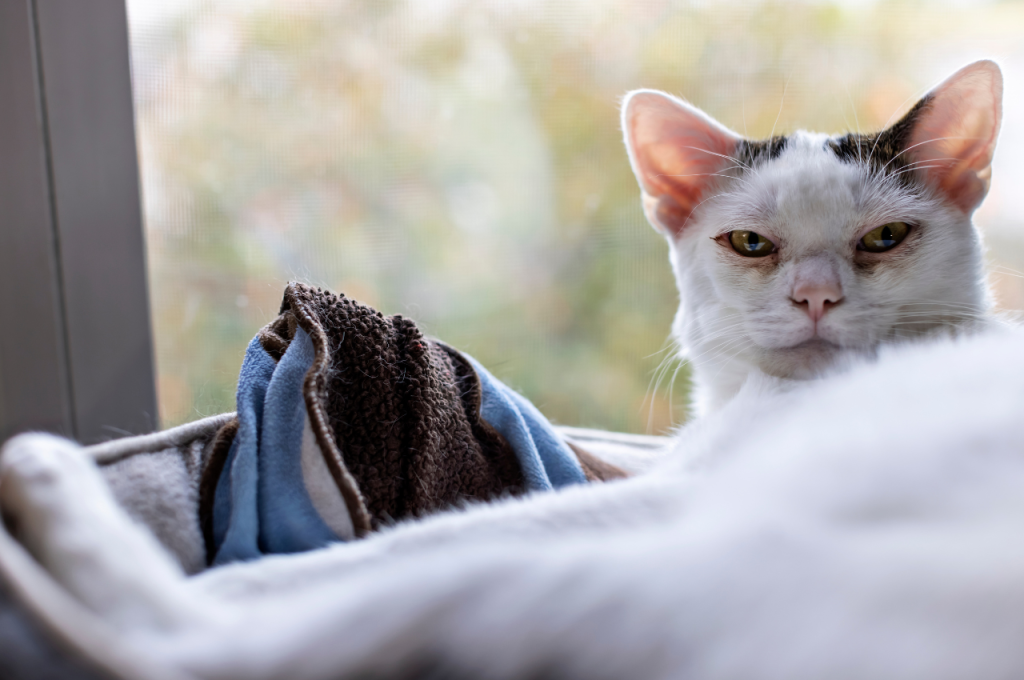Symptoms of FIP in cats include fever, lethargy, loss of appetite, weight loss, and fluid accumulation in the abdomen or chest. Feline infectious peritonitis (FIP) is a viral disease caused by a mutation of the feline coronavirus (FCoV) that can be fatal to cats.
FCoV is common in cats and often results in mild or no symptoms. However, in some cases, the virus mutates into FIP, which attacks the cat’s immune system and causes inflammation in various organs. Unfortunately, there is no cure for FIP, and the treatment is mainly supportive care. Therefore, it’s crucial to recognize the signs of FIP early on to provide the cat with the best possible care and quality of life. If you suspect your cat has FIP, take them to a veterinarian right away for diagnosis and treatment.
Introduction To Fip In Cats
Feline Infectious Peritonitis (FIP) in cats can manifest with symptoms such as fever, weight loss, and lethargy. Other signs include abdominal swelling, jaundice, and difficulty breathing, indicating a serious viral disease affecting cats.

Brief Overview Of Fip
Feline Infectious Peritonitis (FIP) is a viral disease that affects cats. It is caused by a coronavirus that mutates and infects the white blood cells. FIP can be a fatal disease and is one of the leading causes of death in cats. The virus is widespread in the cat population and is more common in multi-cat households and catteries.
Importance Of Early Detection
Early detection of FIP is crucial in ensuring the best possible outcome for your cat. The symptoms of FIP can be difficult to diagnose as they are similar to those of many other diseases. These include loss of appetite, weight loss, fever, diarrhea, and lethargy. However, if you notice any of these symptoms in your cat, it is important to seek veterinary attention as soon as possible. The earlier the diagnosis, the better the chances of managing the disease and prolonging your cat’s life.
Fip Symptoms In Cats
The symptoms of FIP in cats can vary depending on the form of the disease. There are two forms of FIP: wet and dry. The wet form is characterized by the accumulation of fluid in the abdomen or chest, which can cause difficulty breathing. The dry form is characterized by the formation of granulomas or nodules in various organs, including the liver, kidneys, and brain. Symptoms of FIP may include:
- Loss of appetite
- Weight loss
- Fever
- Lethargy
- Diarrhea
- Difficulty breathing (in the wet form)
- Seizures (in the dry form)
If you notice any of these symptoms in your cat, it is important to seek veterinary attention as soon as possible. Remember, early detection and diagnosis are key in managing FIP and ensuring the best possible outcome for your cat.
Recognizing The Two Forms Of Fip
Wet Fip Explained
Feline Infectious Peritonitis (FIP) is a complex and often fatal disease that can affect cats. The wet form of FIP is characterized by the accumulation of fluid in the abdomen or chest, leading to symptoms such as difficulty breathing, abdominal distension, and lethargy.
Dry Fip Explained
Dry FIP, on the other hand, presents with a wide range of symptoms, including weight loss, fever, jaundice, and neurological issues. Unlike the wet form, there may not be a noticeable buildup of fluid, making it challenging to diagnose.
Common Symptoms Of Wet Fip
Wet FIP in cats can cause a range of symptoms, including fever, lethargy, weight loss, and jaundice. Other common signs include difficulty breathing, diarrhea, and abdominal swelling. If you notice these symptoms in your cat, it’s important to seek veterinary care for a proper diagnosis and treatment plan.
Wet FIP, or effusive FIP, is a form of feline infectious peritonitis characterized by the accumulation of fluid in the abdomen or chest. The common symptoms of wet FIP include abdominal swelling and difficulty breathing.
Abdominal Swelling
Abdominal swelling, also known as ascites, is a prevalent symptom of wet FIP. Fluid accumulation in the abdomen leads to a distended and swollen belly in affected cats.
Difficulty Breathing
Cats with wet FIP may experience labored breathing due to the accumulation of fluid in the chest cavity. Rapid, shallow breaths and respiratory distress are indicative of this symptom.
Signs Of Dry Fip
Dry FIP in cats can manifest through symptoms such as weight loss, lethargy, and fever. Other signs may include poor appetite, diarrhea, and difficulty breathing. It is important to seek veterinary care if you notice these symptoms in your cat.
Feline Infectious Peritonitis (FIP) is a viral disease that primarily affects cats. It can manifest in two forms: wet FIP and dry FIP. In this section, we will focus on the signs of dry FIP, which is the more common form of the disease. It is important to recognize these symptoms early on to seek appropriate veterinary care for your beloved feline companion.
Weight Loss And Lethargy
One of the main signs of dry FIP in cats is weight loss and lethargy. Cats affected by dry FIP may start losing weight despite having a good appetite. This unexplained weight loss can be quite noticeable, and you may observe your cat becoming thinner and more bony in appearance. Alongside weight loss, cats with dry FIP tend to exhibit lethargy and a decrease in their usual activity levels. They may become less interested in playing, grooming, or interacting with their human companions.
Eye Inflammation
Another common symptom of dry FIP is eye inflammation. Cats with dry FIP may develop inflammation in the eyes, which can manifest as redness, swelling, or discharge. You may notice that your cat’s eyes appear watery or have a cloudy appearance. Eye inflammation can cause discomfort and may lead to squinting or rubbing of the eyes. It is important to monitor your cat’s eyes closely and seek veterinary attention if you observe any signs of eye inflammation.

In conclusion, recognizing the signs of dry FIP in cats is crucial for early detection and treatment. Keep an eye out for weight loss and lethargy, as well as eye inflammation in your feline friend. If you notice any of these symptoms, consult your veterinarian for a proper diagnosis and appropriate care. Remember, early intervention can significantly improve the prognosis for cats affected by FIP.
Behavioral Changes In Affected Cats
Behavioral changes in affected cats can be a key indicator of feline infectious peritonitis (FIP), a severe and often fatal disease caused by a coronavirus. It’s essential for cat owners to be aware of the potential behavioral symptoms of FIP, as early detection can be crucial in providing the best possible care for their feline companions.
Decreased Appetite
One common behavioral change in cats with FIP is a noticeable decrease in appetite. Affected cats may show little interest in their food, leading to rapid weight loss. This can be accompanied by lethargy and a general lack of interest in activities they previously enjoyed.
Altered Temperament
FIP can cause significant changes in a cat’s temperament. Affected cats may become unusually withdrawn or irritable, displaying a reluctance to engage in playful or social interactions. Conversely, some cats may exhibit heightened anxiety or seek excessive attention from their owners as a result of their discomfort.
Diagnosis And Testing For Fip
Diagnosing FIP in cats involves a combination of clinical signs, blood tests, and imaging. Symptoms of FIP in cats can include weight loss, fever, lethargy, and jaundice. If your cat shows these signs, consult a veterinarian for proper diagnosis and testing.
Blood tests are crucial for diagnosing FIP in cats.
Blood Tests And Their Importance
- Blood tests detect specific antibodies linked to FIP.
- Help differentiate between FIP and other diseases.
- Important for confirming FIP diagnosis accurately.
Imaging Tests
- Imaging tests like X-rays reveal fluid build-up in the chest or abdomen.
- Critical for evaluating organ damage in FIP cases.
Treatment Options For Fip
Feline Infectious Peritonitis (FIP) in cats can present with symptoms such as fever, weight loss, and jaundice. Treatment options for FIP are limited, and focus on managing the symptoms and providing supportive care to improve the cat’s quality of life.
It’s important to consult with a veterinarian for the best course of action for a cat showing signs of FIP.
Current Treatments Available
Supportive Care And Management
Treatment Options for FIP: Feline Infectious Peritonitis (FIP) has no definitive cure. Treatment aims to alleviate symptoms and improve the quality of life for cats.
Current Treatments Available
- Antiviral medications may be prescribed to help manage symptoms.
- Immunosuppressants can help to reduce inflammation.
- Some veterinarians may recommend experimental treatments like Polyprenyl Immunostimulant.
Supportive Care And Management
- Providing a balanced diet can help support the immune system.
- Monitoring and managing symptoms such as fever, lethargy, and weight loss.
- Ensuring a stress-free environment can aid in the cat’s recovery.
Prevention And Control Measures
FIP, or feline infectious peritonitis, is a viral disease that affects cats. Symptoms include fever, loss of appetite, weight loss, and lethargy. Prevention and control measures include keeping cats in a clean environment, avoiding contact with infected cats, and vaccinating against the virus.

Vaccination And Its Efficacy
Regular vaccination can help prevent FIP in cats.
Hygiene Practices
Maintain clean litter boxes and feeding areas to reduce the risk of FIP.
Conclusion
Understanding the symptoms of FIP in cats is crucial for early detection and treatment. By recognizing the signs early on, you can provide your feline companion with the care they need to manage this challenging disease. Stay vigilant, observe changes, and consult your veterinarian for proper diagnosis and guidance.
